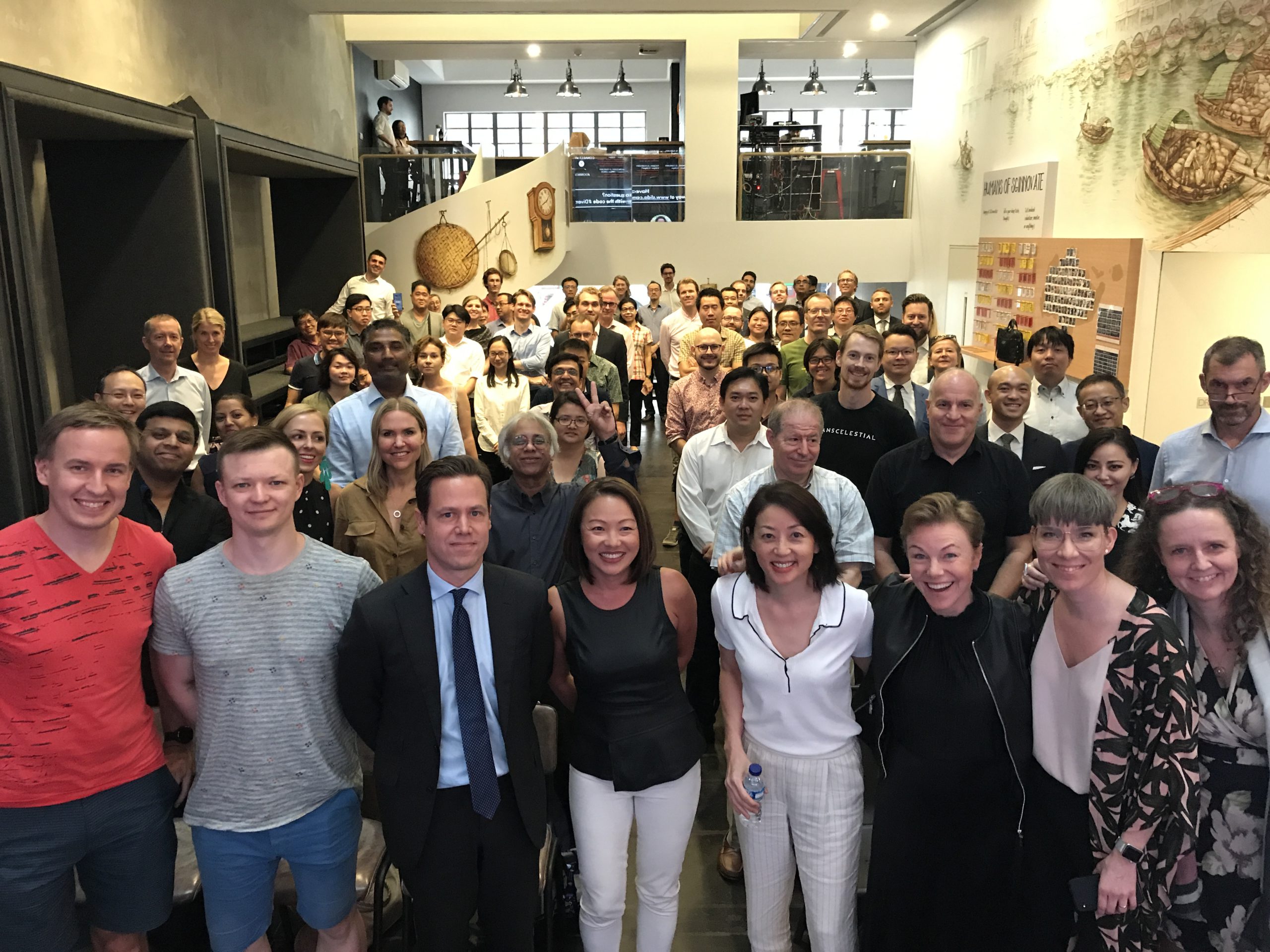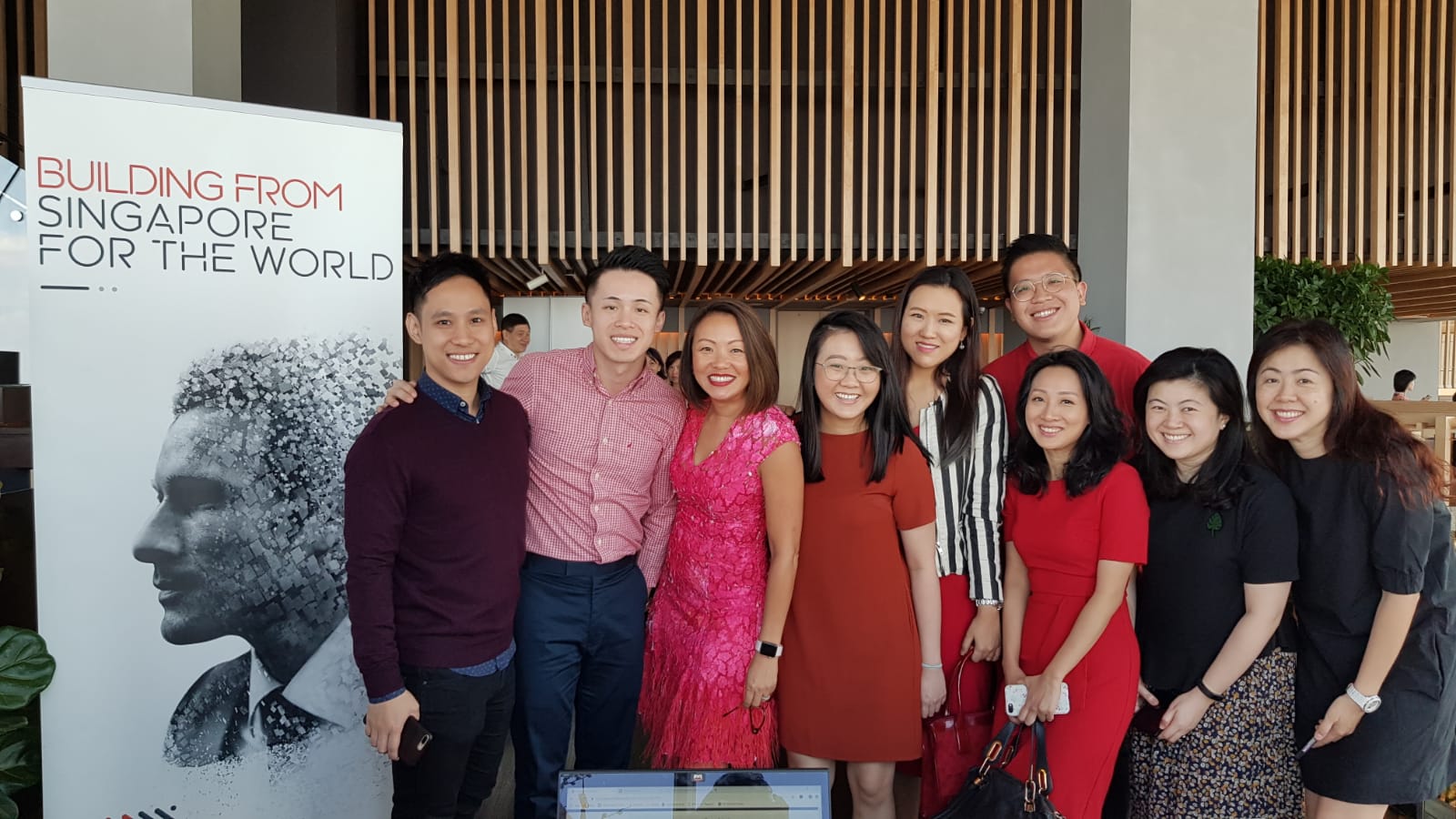SzeKi Sim is the executive director of community and brand at Singapore-based deep tech investor and ecosystem builder, SGInnovate. A seasoned and passionate marketer, she joined as part of SGInnovate’s pioneer team in 2016, with the goal of building a deep tech community from scratch, and enabling entrepreneurial scientists to build, commercialize and scale globally-relevant deep tech innovations from Singapore. Prior to SGInnovate, Sim’s career in marketing included leading teams at companies like Hewlett Packard (HP), Motorola, and Nokia.
Oasis (OS): How did you start your journey at SGInnovate?
SzeKi Sim (SS): It was definitely not planned. Prior to this role, I had been in Motorola for 17 years. So, when this opportunity came, the first thing that came to my mind was, “that is really interesting.”
At that time, I was going through a stage in my career where I wanted to do something for the country. I had spent my entire professional journey in multinational corporations, and I felt an increasing want and need to give back to Singapore by leveraging my skill set. The new role at SGInnovate was timely and the opportunity to build a brand from scratch has always been a marketer’s dream. I couldn’t resist taking up this challenge and made the switch.
OS: Was deep tech something that you knew of before you joined?
SS: That’s an interesting question, because when we started five years ago, deep tech as a category wasn’t well defined. I googled ‘deep tech’ before I joined, and the only search results that came back were related to electronic dance music. This added to the challenge of building up the SGInnovate brand, which now also involved raising the profile of deep tech in Singapore.
I didn’t have a team at all back then, and only had one and a half months to launch SGInnovate. We were working with a clean slate – there was no logo, no website, nothing. It was extremely stressful, but when faced with these situations, you just have to start from the ground up and adopt a completely hands-on approach.
After the launch, my next goal was to sustain and grow upon what we’d done. When we started looking at community events, no one had any idea how to begin. I went to online forums and event websites and searched for keywords such as ‘technologies’, ‘artificial intelligence (AI)’, and ‘blockchain’ to identify relevant networks and establish connections. From there, I would also reach out to these online communities and offer SGInnovate as a space to host their meetups.
That was how we began. It was exciting and scary at the same time, but I saw this as a good learning opportunity. To me, it was nothing ventured, nothing gained. This experience opened the door to a whole new world for me, and I don’t think I’ve ever looked back since.
OS: From the very beginning, building a community for the deep tech ecosystem has been fundamental for SGInnovate. Why was there such a strong need to build a community?
SS: We always say, “it takes a village to raise a child.” Similarly, it really takes a robust and healthy ecosystem to support the startups and their founders as they scale and grow.
We knew from the start that building a strong community will be fundamental to what we do at SGInnovate, because communities bring people together. Starting companies and driving innovation is a continuous journey. When people come together to share what they have been through, both their successes and failures, it sparks ideas and conversations and forges connections in an organic manner. We believe it is through these platforms that the magic happens, and this is why community building was, and remains one of the key pillars of what we’re doing at SGInnovate today.

OS: In your journey of building up SGInnovate, was there particularly one memorable moment that you’ve had, or a moment when you gained a new perspective?
SS: What has amazed me the most about coming into this role is the people that I’ve been able to meet and connect with. I feel great joy and fulfillment having met extremely passionate people, through whom I’ve had the privilege of being at the forefront of technology and innovation. The founders we work with are very passionate, because they are driven to solve the problems that they have identified.
For instance, I’ve come across a startup looking into a solution that predicts strokes before they take place. Through the application of AI, their solution assesses blood flow patterns in patients’ ultrasound, CT, or MRI scans to detect vulnerable plaques, which could eventually lead to strokes. In the future, this could enable doctors to screen for strokes more accurately and adopt a preventative approach to stroke management.
The solution they’re working on has the potential to impact humanity, and it gives me great satisfaction working with these founders, because I can really see the difference that they’re making.
OS: You’ve also mentioned leveraging your skills earlier on. Given that you’ve had such a long career, what was a skill that you’ve managed to transfer over when you started at SGInnovate?
SS: From the marketing perspective, the fundamentals remain the same. As a marketing professional, we are only as good as our last campaign. There is a constant need for reinvention and to think outside of the box. How we can differentiate ourselves and stand out from the noise? This mindset of constantly questioning the status quo must be in the DNA of any marketer.
But I’ll say that in different organizations, the type of people you hire and work with depends on the type of organization you’re in. My previous team at Motorola was very different compared to the group I currently work with at SGInnovate, because of the different needs of each organization.
OS: Do you think your leadership style has evolved or changed?
SS: Definitely, and I think my leadership style has been influenced by my previous leaders. I’ve been very fortunate to have really great bosses throughout my career.
When I started out at HP, I was extremely impressed as a young graduate. The company placed a huge emphasis on respecting the potential of the individual, believing that everyone can do their best. It also opened my eyes to the importance of matching the individual’s aspirations with organizational needs.
Another key lesson that I’ve learned was at Motorola. During an annual performance appraisal discussion, my boss asked me, “what can I do for you?” That surprised me as I had never been asked this before. This really changed my perspective on leadership – as a leader, your role is to help your teammates grow and hone their skills.
All these lessons helped me shape my own leadership style. I believe that to bring out the best in people and make the most of the talent that you have on the team, you must give the team some freedom. Set clear objectives and allow them to achieve project goals on their own, rather than mandating the steps they should take. I always ask my team, “how can I make your time in this organization valuable?” We want great teammates to stay with us forever, but that’s never realistic. More importantly, when they leave, I want to know that I have done my job as a manager in helping them grow and build their capabilities, so they are well-positioned to take on bigger roles.

OS: What is something that you’ve learned from your career?
SS: Something that I’ve learned very early on is that “you as an individual need to be the master of your own destiny.” Instead of waiting for things to happen, sometimes you have to make them happen.
For example, my stint at HP took place in the very early days of e-commerce, and I knew I wanted to be involved in establishing HP’s online presence. Although this was completely out of my regular work scope, I approached my manager and offered to be the project lead in setting up the HP Online Store. Of course, in those days, we were met with resistance from various stakeholders. Ultimately, I was given the opportunity to lead the effort and it was an invaluable experience.
At SGInnovate, it is this the same entrepreneurial spirit that I want to instill in our team. We must leave our comfort zones and experiment with new formats and technologies because that is how you can learn new things and make a difference.
OS: What is the team at SGInnovate looking forward to in the next few years?
SS: We’re close to our fifth anniversary and to date, we’ve built the largest and fastest-growing deep tech community in Singapore, with close to 70,000 contacts. Our focus moving forward will be to build on this and start developing vertical communities which will help startups as they scale and grow.
We also want to establish even stronger connections within ASEAN and internationally to see how we can enable or provide market access to our startups who are looking to expand beyond Singapore. We believe that deep tech has a big role to play in addressing the kinds of problems the world is facing, problems that are not confined to Singapore.
Oasis, the brainchild of KrASIA, aims to provide a haven for human-centered stories on Asia’s leaders. Click here to read similar stories.
